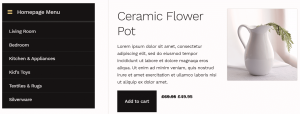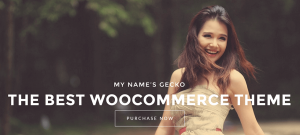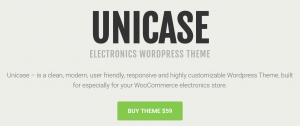- Jan 17, 2017
 0
0- by A2 Marketing Team
Although setting up a WooCommerce store is relatively straightforward, it involves quite a few steps. You have to find a stable web host, install the plugin, configure it, and pick the perfect theme for your store.
If you’re familiar with WordPress, then you already know how themes work. WooCommerce themes aren’t any different – they’re just designed to operate better with the plugin and provide you with an overall smoother experience.
If on the other hand, you aren’t familiar with the concept of themes, we’ll cover that shortly. Then, we’ll move on to where you can find the best WooCommerce themes, and introduce you to some of the most popular picks these days. Let’s get started!
Why You Should Use a WooCommerce-Specific Theme
When it comes to WordPress, think about themes as the decoration for the empty home the platform represents. Technically, most WordPress themes should work with WooCommerce as well, since it’s a plugin, but not all of them do so perfectly.
WooCommerce-specific themes, on the other hand, are built from scratch to maximize compatibility with the plugin and its extensions. Take Homestore for example:
Homestore is a Storefront child theme (we’ll get to Storefront further on) designed with online department stores in mind. Thanks to this specificity, it can offer a much better WooCommerce experience than a regular WordPress theme possibly could.
Furthermore, with WooCommerce-specific themes you often get access to excellent documentation and a direct line of support from its developers. In most cases, they are highly knowledgeable about the platform, which makes them invaluable troubleshooting resources.
Where to Find WooCommerce Themes
Sadly, there aren’t as many places to find WooCommerce themes as there are for ‘general’ WordPress options. For efficiency’s sake, we decided to link to the two most prominent WooCommerce theme repositories instead of including multiple smaller sources. They aren’t the only places to find Woocommerce Themes, but they should be your first stop when looking for one.
1. WooThemes
WooThemes is part of the WooCommerce site, and it houses the plugin’s ‘official’ and related themes. As you might expect, every theme they feature is fully compatible with WooCommerce – in fact, they were all built with the plugin in mind. WooThemes also prides itself in keeping its themes compatible with the Jetpack plugin and maintaining high Search Engine Optimization (SEO) practices.
Further on, we’ll discuss WooTheme’s flagship theme, but for now, you should take a look at two of their best offerings – Canvas and The One Pager.
2. ThemeForest
ThemeForest is the largest repository of premium WordPress plugins and themes, and it also offers lots of options for WooCommerce users. You won’t find any free WooCommerce themes, but in most cases, their products are worth the price tag. Premium themes often pack tons of advanced features and integrations you wouldn’t find on their free counterparts, which make them a good pick for users that want to get the most out of their investment.
As with WooThemes, we’ll cover a couple ThemeForest’s best themes in a minute. In the meantime, check out two of our favorite choices: Flatsome and The Retailer.
3 Top WooCommerce Themes
Before we introduce you to our picks, we want to reassure you these aren’t the only good choices when it comes to WooCommerce themes. There are dozens of high-quality WooCommerce themes out there, and it would take a book to cover them all. With that in mind, we decided to settle on three solid choices that should provide a great experience for most users.
1. Storefront
Technically, Storefront is a ‘general’ WordPress theme. However, it was built from the ground up to maximize WooCommerce integration. In fact, it’s maintained by a group of WooCommerce developers, which makes it as reliable as any other pick you’re likely to find.
Storefront features a responsive grid system, and it places lots of emphasis on good SEO practices. It’s a lean, reliable theme for people that want an optimized e-commerce store.
Key Features:
- It’s the ‘official’ WooCommerce theme.
- Adheres to sound SEO practices.
- Plenty of customization features.
- Fully responsive and localized to several languages.
Price:
Storefront is an open-source theme, which makes it an ideal pick for WooCommerce stores on a budget.
2. GECKO
GECKO is a versatile WooCommerce theme built using Ajax. It packs a lot of features for users of all types, including a full-fledged drag-and-drop builder and eight ready-to-go layouts you can choose from if you’re in a hurry. GECKO also plays nice with several third-party products – it integrates with Instagram, MailChimp, and Lookbook out of the box (among many others).
When it comes to style, GECKO adheres to modern trends. It features attractive full-width headers and a wide variety of sliders. All the pre-built layouts that go with the theme include eye-catching product display sections, which make it a great fit for fashion stores. Overall, GECKO is a good option for WooCommerce users that like to have as many features available to them as possible.
Key Features:
- Responsive theme built using Ajax.
- Includes a powerful drag-and-drop builder for easy customization.
- Integrates with several third-party products, including MailChimp and Instagram.
- Its pre-built layouts feature modern styles perfect for fashion e-commerce stores.
Price:
A regular license for the GECKO theme will set you back $59.
3. Unicase
Whereas Storefront aims to be as lean as possible and GECKO attempts to pack in as many features as possible, Unicase strikes a delicate balance between both approaches. It’s a modern-looking theme without much bloat, based on the Bootstrap framework. Unicase includes plenty of helpful features (but not too many), such as live product search, and integration with Google Fonts.
From a design standpoint, Unicase favors clean lines and uncluttered layouts. It includes several pre-built styles, and most of them would make great fits for electronics stores. The same goes for any type of e-commerce store that values usability over flashiness but still wants to look great.
Key Features:
- Responsive theme built using Bootstrap.
- It comes with the Visual Composer drag-and-drop builder.
- Includes three pre-built layouts, ranging from electronic to furniture stores.
- Supports live product search.
- Integrates with Google Fonts.
Price:
A regular license for Unicode will cost you $59.
Conclusion
You don’t necessarily have to use a WooCommerce-specific theme for your store, but there are several benefits to doing so. Using the right theme can make your WooCommerce experience that much smoother and enable you to find helpful documentation or support if you run into an issue.
Your first stop when looking for your next WooCommerce theme should be either WooThemes or ThemeForest, depending on what you’re looking for. If you’re not sure which type of theme you’re leaning towards, then check out Storefront, GECKO, and Unicase to get a better idea of what different styles there are out there.
Image credit: Pixabay.


















